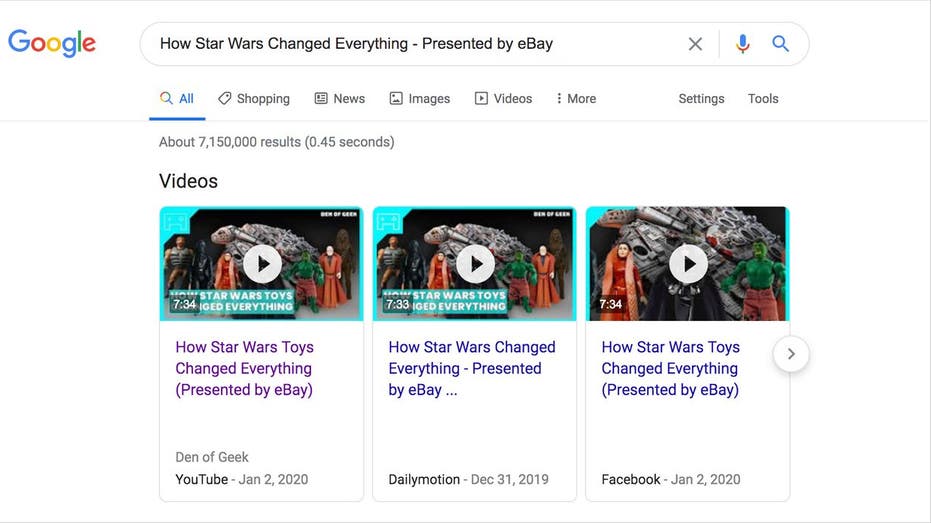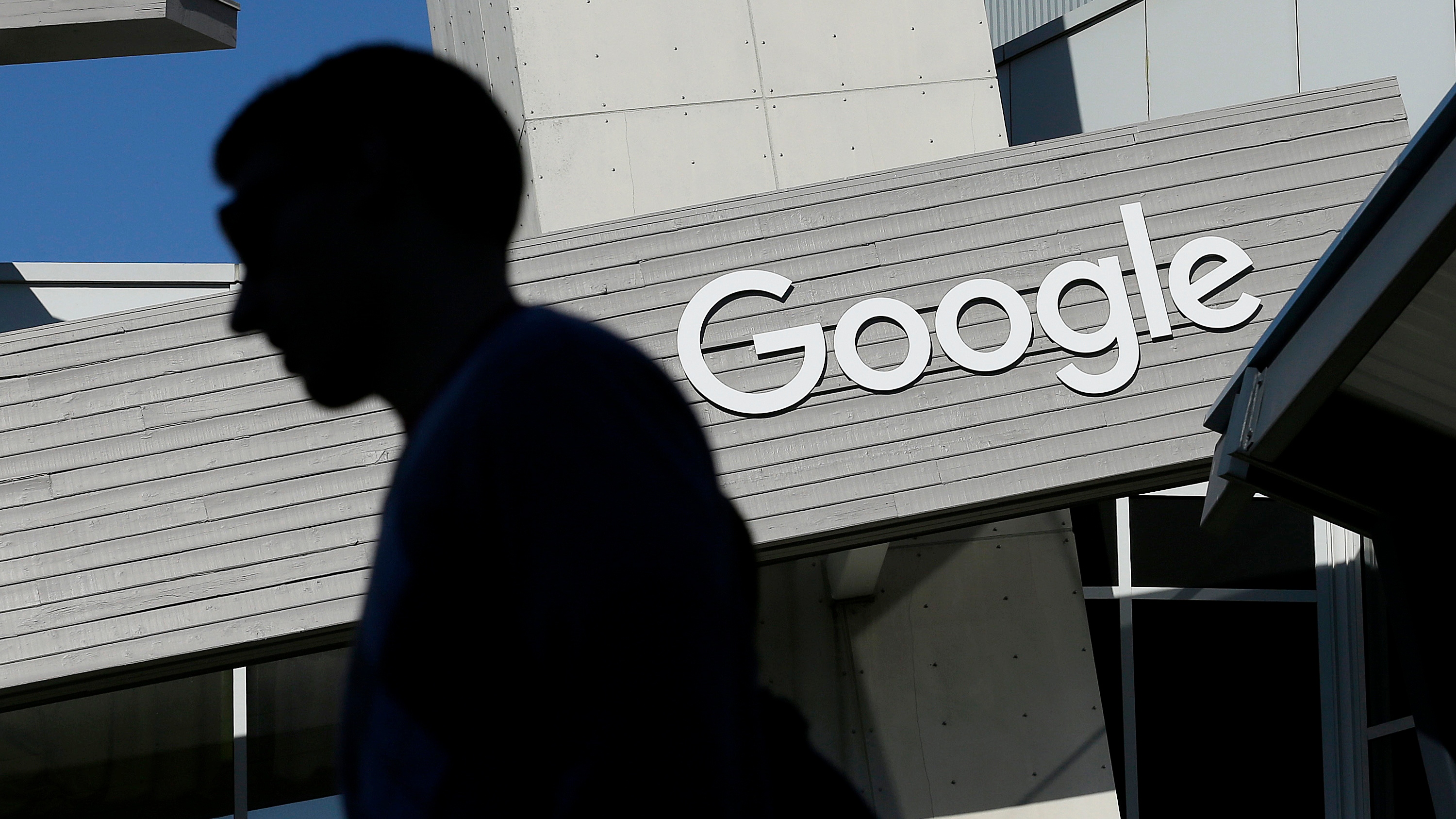Google steers users to YouTube over rivals
Journal tests show YouTube usually ends up first in Google Search video carousels
When choosing the best video clips to promote from around the web, Alphabet Inc.’s Google gives a secret advantage to one source in particular: itself.
Or, more specifically, its giant online-video service, YouTube.
Take a clip of basketball star Zion Williamson that the National Basketball Association posted online in January, when he made his highly anticipated pro debut. The clip was popular on Facebook Inc., drawing more than one million views and nearly 900 comments as of March. A nearly identical YouTube version of the clip with the same title was seen about 182,000 times and garnered fewer than 400 comments.
But when The Wall Street Journal’s automated bots searched Google for the clip’s title, the YouTube version featured much more prominently than the Facebook version.
The Journal conducted Google searches for a selection of other videos and channels that are available on YouTube as well as on competitors’ platforms. The YouTube versions were significantly more prominent in the results in the vast majority of cases.
This isn’t by accident.
Engineers at Google have made changes that effectively preference YouTube over other video sources, according to people familiar with the matter. Google executives in recent years made decisions to prioritize YouTube on the first page of search results, in part to drive traffic to YouTube rather than to competitors, and also to give YouTube more leverage in business deals with content providers seeking traffic for their videos, one of those people said.
“All else being equal, YouTube will be first,” the person said.
A Google spokeswoman, Lara Levin, said there is no preference given to YouTube or any other video provider in Google search. “Our systems use a number of signals from the web to understand what results people find most relevant and helpful for a given query,” Ms. Levin said. She declined to comment on the specific examples cited in this article.
A Facebook spokeswoman declined to comment on the results. An NBA spokesman declined to comment.
Google’s competitive practices are already under heavy scrutiny amid allegations it uses its dominance in search to suppress competition in other markets. An antitrust lawsuit from the Justice Department is likely as early as this summer, the Journal has reported. Executives from Google and other tech companies are set to testify before Congress July 27 as part of an investigation into their power over the digital marketplace.
A Journal investigation last year showed that Google engineers make regular algorithmic changes in order to achieve specific business aims, contrary to the company’s public statements that its search results are purely objective and autonomous.
Ms. Levin said the search giant is transparent about making thousands of changes each year.
In January, Google disclosed for the first time that YouTube had grown into a business with $15 billion in annual advertising revenue—making it larger than many established media giants. In the first quarter, its revenue grew 33% to more than $4 billion.
Despite its heft, YouTube faces competitive challenges from other tech and media firms that host videos.
Facebook has invested heavily in attracting content—from recipes to pop culture and sports clips—to its Facebook Watch service, a video-distribution channel. Amazon.com Inc.’s Twitch, purchased in 2014, has attracted a large audience for its videos and live streams of professional videogamers.
Vivendi SA’s online-video hosting and sharing site Dailymotion was one of the original competitors to YouTube but has long lagged far behind in usage.
Other online-video competitors include Instagram, Twitter Inc. and ByteDance Ltd.’s TikTok.
| Ticker | Security | Last | Change | Change % |
|---|---|---|---|---|
| GOOGL | ALPHABET INC. | 314.35 | +4.57 | +1.48% |
| FB | PROSHARES TRUST S&P 500 DYNAMIC BUFFER ETF | 42.47 | +0.08 | +0.20% |
| AMZN | AMAZON.COM INC. | 227.35 | +0.59 | +0.26% |
| VIVHY | VIVENDI SE | 2.72 | +0.00 | +0.00% |
| TWTR | NO DATA AVAILABLE | - | - | - |
GOOGLE ANNOUNCES NEW DIGITAL JOBS PROGRAM TO SUPPORT AMERICA’S ECONOMIC RECOVERY
The Journal compared how popular videos and gamers on Facebook Watch, Twitch and Dailymotion fared compared with YouTube in Google searches.
The tests found that video results in a large majority of cases featured YouTube videos ahead of the same or very similar versions of the videos available on competitor sites, even when the actual views and followers were higher on the competitor sites.
The tests, most of which took place in March, focused on video results in prominent boxes marked “Videos” on the first page of search results on desktop and laptop computers. In those results, three videos are visible at a time, with the user being able to click through a carousel of lower-ranked results.
Google also gave YouTube a greater proportion of the total number of videos in the carousel, which includes up to 10 results, than it did to competitors, the tests showed.
That prioritization appears to contradict the company’s public posture on how it indexes and ranks videos in its search results. The company has told website owners that the video carousel is an “organic search element,” a term that means Google shows users what its algorithms judge to be the most-relevant results. The company publishes detailed instructions for websites to make sure their videos can appear in the boxes.
Ms. Levin, the Google spokeswoman, said that the number of video views and user comments aren’t factors in its search rankings.

In Journal searches for 28 Tasty videos that appeared on both Facebook and YouTube, the YouTube version came up first all but one time, and YouTube occupied 61% of the slots in the video carousel.
CALIFORNIA PROBING GOOGLE FOR POSSIBLE ANTITRUST VIOLATIONS: REPORT
The Journal’s tests worked by searching Google for the exact titles of 98 recent videos on Facebook and Dailymotion that had also been posted almost identically to YouTube. (Two from another platform in the original 100 were discarded.)
Of the searches, 82 returned a video carousel. The Journal then compared the relative placement of results. For the Twitch tests, the Journal searched Google for the handles of the seven most-followed videogamers still active on Twitch at the time to bring up their videos.
YouTube is one of the world’s most popular video services, and its videos often outperform those on other platforms. The Journal specifically chose content with more engagement on Facebook or Dailymotion and high numbers of followers on Twitch in order to detect any apparently skewed results in the Google search.
In searches for the Facebook video titles where Google returned a video carousel on the home page, the YouTube version was in the first slot 95% of the time. When the Journal bots searched for the titles of the Dailymotion videos, the YouTube versions came up first 82% of the time. Twitch also sharply underperformed in video carousel search results.
Google’s search results also include videos in other places outside the carousel, such as in normal search results, with or without thumbnail images, and also in a dedicated video tab. The Journal’s tests focused on the carousel because it is widely viewed by companies and search-engine experts as generating more traffic because it’s often on top of search results.

Google headquarters in Mountain View, Calif. (SAM HALL/BLOOMBERG NEWS)
YOUTUBE TV ADDS VIACOMCBS, RAISES PRICE
Dirk Lewandowski, a professor at Hamburg University of Applied Sciences, who has studied potential bias in Google Search, said the Journal’s testing methodology was a sound way to examine how Google favors certain types of content. He added, however, that there is an inherent problem with search-bias research, including his own: There is no objectively fair way to rank results, because all lists involve choices.
“If Google says, ‘We favor websites that are more popular,’ then by their standard it might be perfectly OK to list YouTube first,” Mr. Lewandowski said. “With all these studies, when you try to measure search-engine bias, the problem is that we don’t have a baseline.”
Antitrust investigators have over the years turned up evidence of alleged bias. In the late 2000s, for example, Google allegedly wanted to boost the rankings in search of its so-called verticals: narrower search results for things like flights, local restaurants or product listings that Google compiles for users. Some vertical results, like product listings, are ads.
Google engineers made changes to its algorithms so that every time a user’s query returned a competing vertical-search website, Google would trigger its own vertical results higher on the page, according to a staff report from the Federal Trade Commission’s Bureau of Competition that the Journal obtained in 2015 through a Freedom of Information Act request.
The report concluded that Google used anticompetitive tactics and abused its monopoly power in a way that harmed users, but FTC commissioners ultimately voted unanimously in 2013 to end its investigation after Google agreed to some voluntary changes not related to search ranking, the Journal reported. The FTC said it had not found “sufficient evidence” that Google was manipulating its search algorithms to unfairly disadvantage vertical websites.
When it comes to video search, the Journal was unable to determine exactly how Google prioritizes YouTube clips over those from rivals. One of the people familiar with the prioritization said that engineers were doing it, but declined to explain how.
Another person familiar with the matter said that one result of the prioritization is that YouTube videos are more likely than competitors to appear in the search results’ video carousels. The carousels started appearing in desktop search results in the summer of 2018. (Video results from Google searches on smartphones are presented differently.)

Adam Cohen, director of economic policy at Google, spoke at a Congressional antitrust hearing last year. (ANDREW HARRER/BLOOMBERG NEWS)
WHICH SOCIAL MEDIA SITE HAS THE MOST USERS?
Google says in help documentation for website owners that any video can be included in what it calls “rich results”—which can show more than text—like the video carousel, and that it helps if the website provides Google with information to help categorize the videos. Google says websites should provide a description, title, thumbnail image and a date, and urges them also to provide other info, like the length, and how many times it has been viewed.
Many websites provide this information, but have long suspected they aren’t getting a fair shake. When Dailymotion would see traffic from Google search plummet, Google would sometimes explain a bug was preventing it from adding the categorization information, a former Dailymotion executive said. Such problems could take weeks to resolve, the former executive added.
The Journal’s March tests showed that Twitch’s underperformance in the video carousel was extreme.
With bots searching for the handles of the seven most-popular videogamers on Twitch, the Amazon-owned service came up first in Google’s video carousel once out of seven times. Out of a total of 69 carousel slots, Twitch occupied only four.
The results were notable because five of the seven gamers had more followers on Twitch than subscribers on YouTube at the time of testing.
In a separate test of Google searches in September, the Journal bots searched 75 times for each of three videogame terms, including two names of popular gamers. YouTube videos accounted for 88% of the clips presented in the video carousels. By contrast, Twitch accounted for just 5.7% of the results.
A spokeswoman for Twitch declined to comment.

Professional gamer Ali Kabbani, who uses the player name Myth. In Journal tests against YouTube, videogaming site Twitch came up first in Google’s video carousel once out of seven times. Out of a total of 69 carousel slots, Twitch occupied only four.
YouTube’s search advantage was most pronounced in results for the titles of videos posted to Facebook Watch, the Journal’s testing showed.
The testing included recipe videos that digital-media firm BuzzFeed posted under its food brand Tasty in the weeks before the analysis. Among hundreds of Tasty videos, the Journal identified the 28 most recent that BuzzFeed posted in nearly identical form and title to both Facebook Watch and YouTube that garnered more than one million views on Facebook.
One nearly six-minute video about caramel desserts on Facebook had been viewed 5.4 million times, or 89 times the number of views of the YouTube version—yet the YouTube version came up first in Google’s video results.
Overall, the set of Tasty videos the Journal searched for received more than 79 million views on Facebook, 9.7 times the number of views of nearly identical videos on YouTube, and nearly 45,000 comments, 4.2 times the number on YouTube.
Yet in searches that surfaced a video carousel, the YouTube version came up first all but one time. YouTube occupied 61% of the slots in the video carousel, compared with 34% for Facebook.
A spokeswoman for BuzzFeed declined to comment.
Den of Geek, a pop culture website owned by Dog Tech LLC, for years published its videos on Dailymotion and then embedded them on its own website.
It chose Dailymotion because the company gave it more flexibility than YouTube to sell its own ads to run on its videos, according to Matthew Sullivan-Pond, the Den of Geek publisher.
In the March testing, the Journal’s bots searched for the 26 most-recent Den of Geek videos posted to both Dailymotion and YouTube in which the Dailymotion video garnered more than 150,000 views. Of those searches, 21 returned a video carousel.

In Journal tests, Dailymotion’s Den of Geek videos had high numbers of viewers, but the YouTube versions had better placement in searches.
GET FOX BUSINESS ON THE GO BY CLICKING HERE
On average, in part because they garnered traffic from being embedded on the Den of Geek website, the Dailymotion versions had 1,100 times the views of their YouTube counterparts; one, about Star Wars toys, garnered 1.3 million views on Dailymotion and just 66 on YouTube at the time of testing.
But Google Search returned the YouTube videos in the first slot of its video carousel two-thirds of the time, and accorded YouTube 52% of the total carousel spots, compared with 43% for Dailymotion. YouTube also came first in the search for the title of the Star Wars toys video.
Mr. Sullivan-Pond said he had long noticed that the Dailymotion versions of the site’s videos were getting worse search placement than those on YouTube.
Going forward, he said, Den of Geek has switched the hosting provider for its on-site videos from Dailymotion to Connatix, another video-hosting company that doesn’t have a consumer-facing site.
The company is also investing more resources on building its YouTube channel, and has started embedding YouTube videos on its own website.
Guillaume Clement, Dailymotion’s chief operating officer, said he is “not surprised by these unfavorable results for Dailymotion.” He added that the company has found that even videos available first on Dailymotion appear less prominently on Google than the same videos that are published several days later on YouTube.
“It raises questions about the ability of competing video platforms to grow and develop, when faced with YouTube’s overvaluation by Google, by far the world’s most-used search engine,” Mr. Clement said.
METHODOLOGY
To choose videos for testing, the Journal browsed a list of “Popular Videos” on the main page of Facebook Watch, without being signed in to Facebook. Among the publishers of those videos, the Journal looked for very popular channels that often cross post highly similar videos to YouTube, and where the channel’s Facebook page had more followers than the corresponding YouTube page had subscribers.
The Journal then compared all the recent videos with more than one million views on a selection of those Facebook channels to those posted on YouTube to find all those that were nearly identical—meaning they were made up of the same footage, with only very small changes to editing or title. Their lengths had to be within a few seconds of each other and the titles needed to have only small wording changes or punctuation differences to qualify.
For Dailymotion, the Journal analyzed the site’s public list of its videos, which it publishes so that search engines such as Google can index them, to identify popular English-language channels that frequently posted nearly identical videos to both Dailymotion and YouTube.
The Journal then compared all the recent videos with more than 150,000 views on a selection of those Dailymotion channels to identify which ones had been posted nearly identically to YouTube.
For Twitch, the Journal used the site Twitchmetrics.net to identify the most-popular streamers on the platform by followers, and selected only those seen on Twitch during the month prior to testing and whose handles were names used by individuals and not companies. The Journal searched for the Twitch handles, with the exception of the gamer known as Myth, for whom the Journal queried “Myth Fortnite”—adding the name of the game Myth often played at the time of testing, because his name wasn’t specific enough to turn up relevant results in Google.
To carry out the tests, the Journal created computers in the cloud that presented new IP addresses, the unique identifier that many webpages use to associate one browser session with another, for each search. The computers were, however, identifiable as working off a server in Virginia, and location could be a factor in our results.
Code was deployed onto those computers that would mimic a human typing a phrase into the Google search query box, such as “Myth Fortnite.” The computers searched for the video titles and streamer handles, and the Journal captured the HTML—the code that represents the content of a webpage—of the full search page and extracted the contents of the video carousel, if there was one.
The computers executed one search for each video title or streamer handle. The searches took place every five minutes for several hours on March 3, with a new IP address for each search.




















